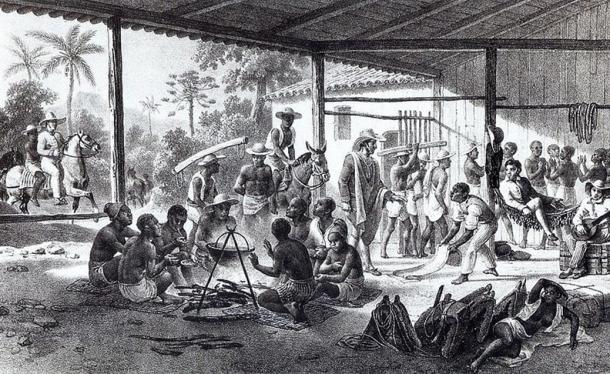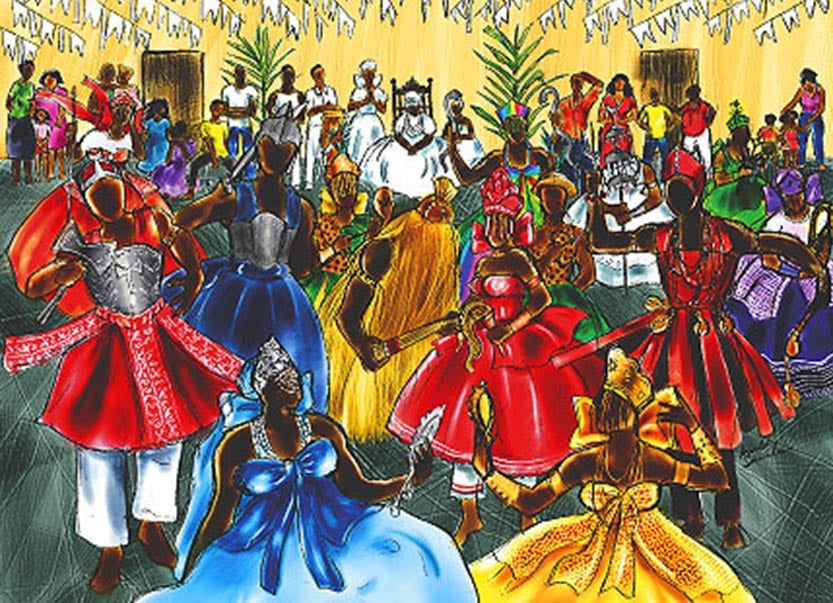Candomble: The African-Brazilian Dance in Honor of the Gods
Candomblé (meaning dance in honor of the gods ) is a religion found primarily in Brazil with a number of elements derived from African cultures. It not only incorporates some religious aspects of Yoruba, Bantu, and Fon African societies, but it gradually integrated some characteristics of Catholicism as well. It can be argued that Candomblé represents the syncretism that transpired following the cultural interaction between people of African descent and Europeans. Although Candomblé does not have Holy Scriptures, the moving oral tradition has remained quite strong since its formation.
The Rise of Candomblé
Africans, who were transported to Brazil by the Portuguese between the 16th and 19th centuries by means of the slave trade, brought with them a plethora of cultures and philosophies. However, many of these spiritual beliefs were completely eradicated shortly after their arrival. Church leaders and slave owners encouraged Africans to convert to Christianity in order to satisfy their moral and religious obligation. This was partially effective as Catholicism became the principal religion for the slaves.

Illustration of African slaves recently brought to Brazil. (1830) By Johann Moritz Rugendas. ( Public Domain )
However, whilst the fear of persecution meant that many fully succumbed to the new religion imposed upon them, others sought a connection amongst themselves. Africans from Bantu found a similar system of worship to the indigenous people of Brazil. This connection led the people to re-learn other forms of ancestral worship and created several new religions. Though some have died out, Candomblé is one of the practices to have been created by the displaced peoples.Thus, many Africans appeared to adhere to Catholicism whilst being devoted practitioners of Candomblé. During the early stages of its development, Africans in Brazil created Catholic fraternities but practiced Candomblé in secret. The reason being that they saw similarity between the saints and deities but feared persecution, so the divine symbols of their gods were “concealed” behind corresponding Catholic saints. Being partially faithful to Catholicism was also seen as a way to assimilate into the new society and to minimalize oppression.

Photo of a Candomblé temple in Bahia, Brazil. ( Public Domain )
To make matters worse, there were various “government-led public campaigns and police action” (Omari-Tunkara, 2005) to instill further distress in the people. Nevertheless, when a law that required police permission to hold public ceremonies was terminated in the 1970s, the widespread oppression and abuse of those who practiced Candomblé ceased.
Variations of Candomblé Found in Latin America
The name Candomblé (which is now the most common written form) originates from the Kingdom of Congo, and the word corresponds to a Bantu-family language. It was referred as “Batuque” prior to the 19th century and it is known as “Macumba” in some parts of Brazil, (although this particular group is said to have slight differences in its practice).
Some enslaved Africans in Brazil were also transported to Brazil from North Africa and brought with them Islamic ideas that were later incorporated in Candomblé as well. This branch is known as the “Males”— they have different spiritual affiliations, worship on different religious days, and the clothing practitioners use is similar to Muslims in the Middle East.
- Discovery of ancient stone tools in Brazil challenges belief about human arrival in the Americas
- Sunken Land in Brazil brings up speculations about Atlantis
- Wealth and Religion Tied through Time: Was Ancient Religious Morality Spurred by Affluence?
Two million people currently practice Candomblé and though it is primarily established in Brazil, it can also be found in small numbers in other Latin American countries including Argentina, Venezuela, Colombia, and Uruguay.

















کوئی تبصرے نہیں:
ایک تبصرہ شائع کریں
علمی وفکری اختلاف آپ کا حق ہے۔ بلاگ پر تمام خدمات بلا اجرت فی سبیل اللہ ہیں بس آپ سے اتنی گزارش ہے کہ بلاگ کو زیادہ سے زیادہ شئیر ،کمنٹس اور لائیک کریں ۔آپ اپنی پسندیدہ کتاب کی فرمائش کر سکتے ہیں۔اگر کسی کتاب کو ڈون لوڈ کرنے میں پریشانی ہو تو آپ کمنٹس میں لکھ دیجئے ان شاء اللہ اسکا لنک درست کر دیا جائے گا۔